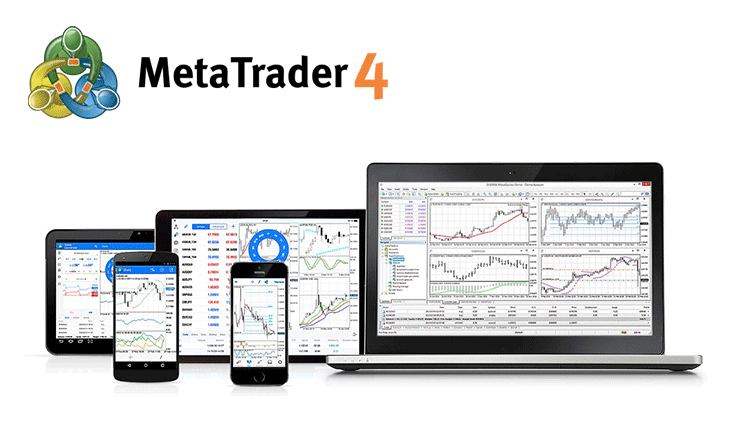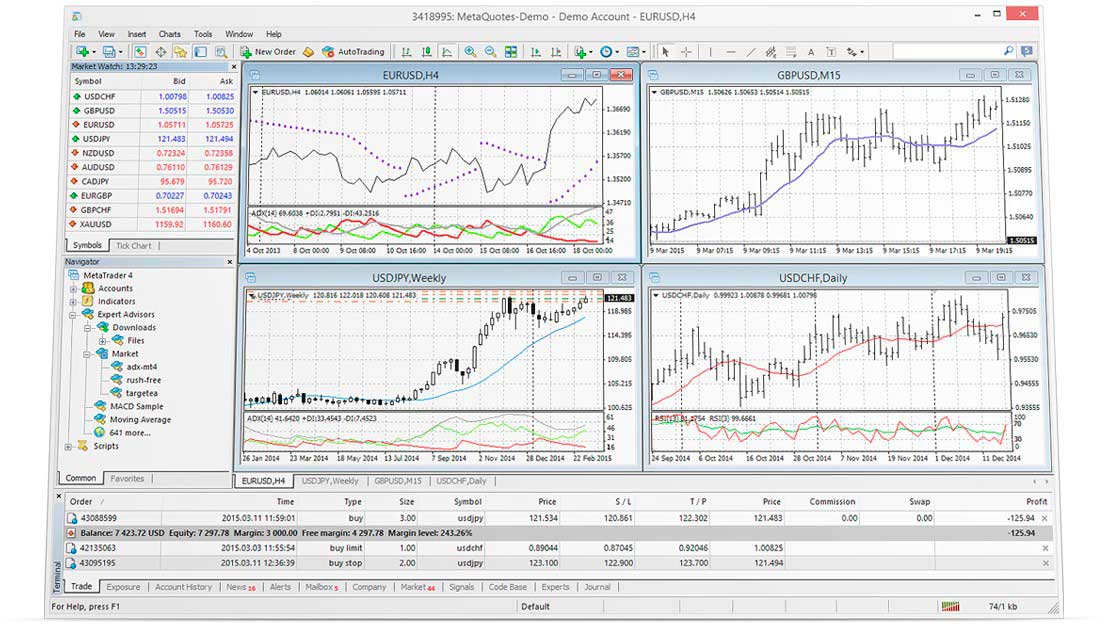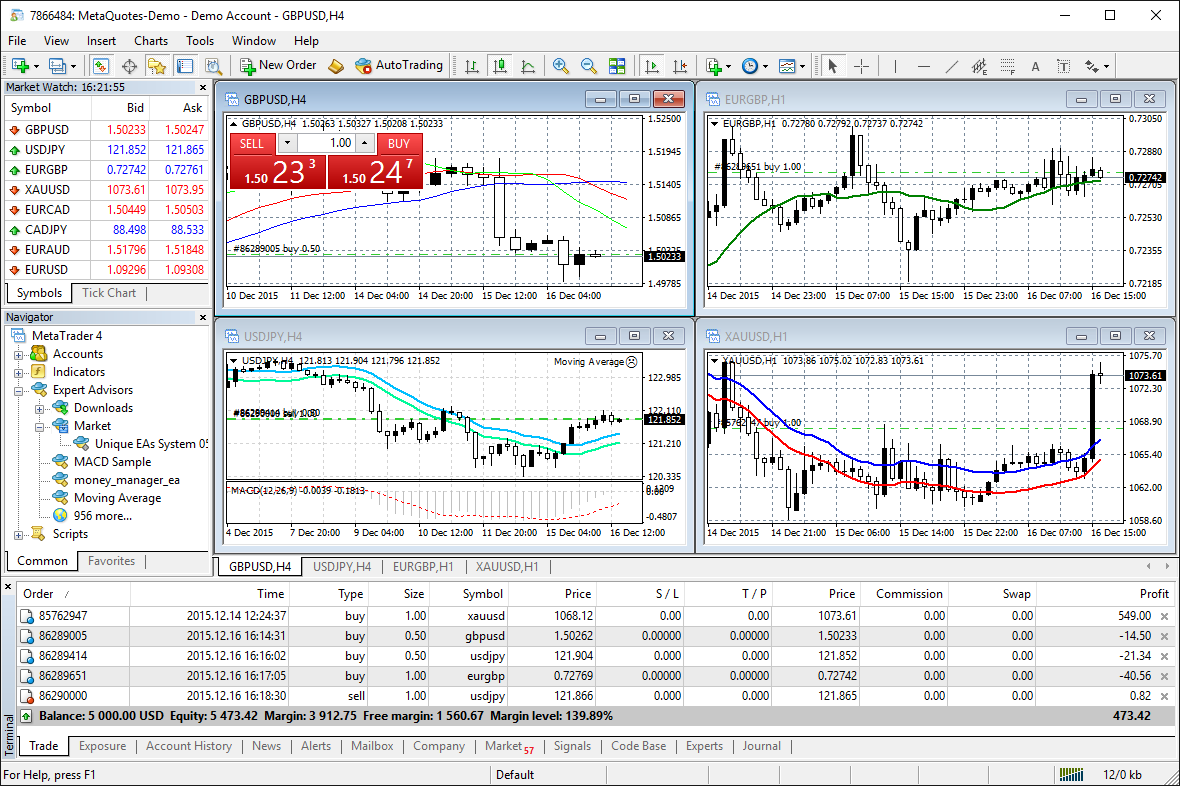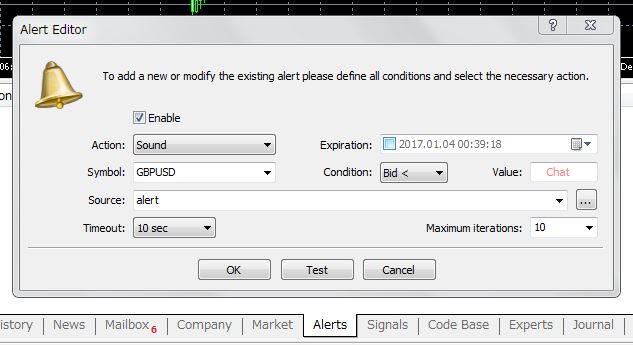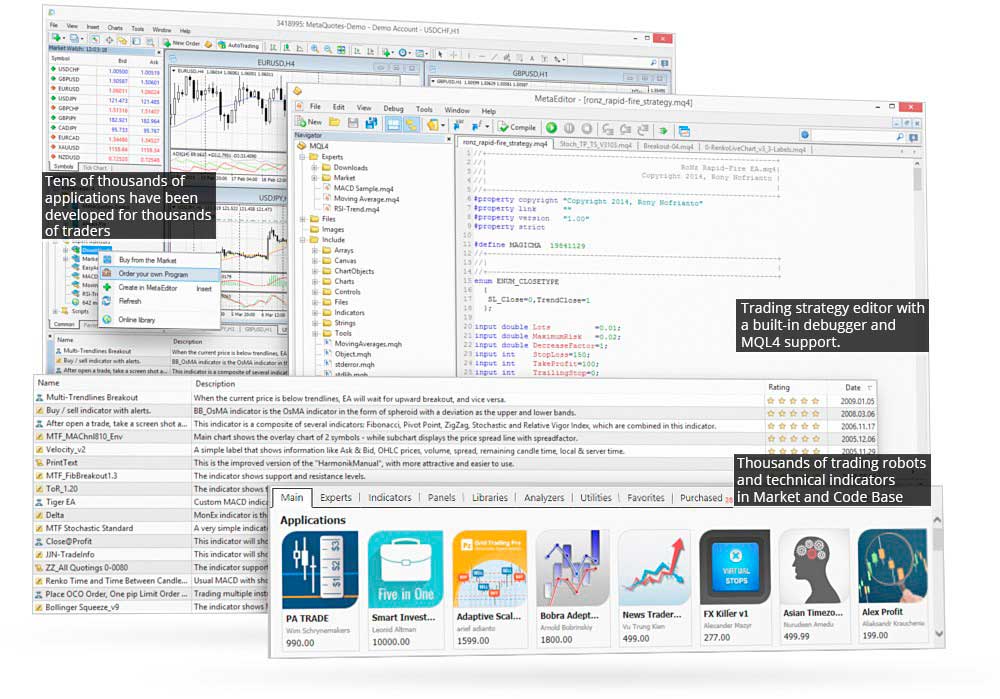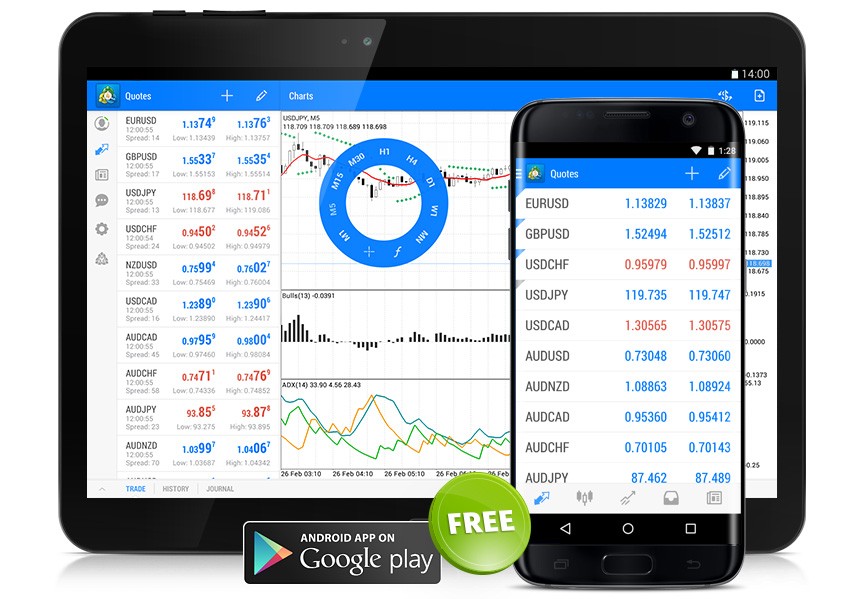MT4 vs MT5 – Which is The Best Trading Platform To Use in June 2025?
If you’re an experienced trader that wants access to high-level technical indicators – both MT4 and MT5 service this purpose. Both platforms are also good for facilitating automated trading robots and advanced order types. But which third-party platform is right for you?
In this guide, we make a full MT4 vs MT5 comparison so that you have a clearer understanding of which platform is more suited for your trading goals. We’ll also reveal the best broker for trading with MT4 and MT5 in 2025.
-
-
What are MT4 & MT5?
MetaTrader 4 (MT4) and MetaTrader 5 (MT5) are third-party trading platforms. MT4 was specifically developed for Forex trading, whereas MT5 was created to streamline trading in non-Forex CFDs. These two platforms utilize distinct programming languages, with MT5 offering faster backtesting capabilities compared to MT4. Furthermore, MT5 boasts features like a Depth of Market (DOM) functionality and enjoys technical support from MetaQuotes, setting it apart from MT4.
The interface can be downloaded to your desktop computer and then connected with your chosen broker. As such, MT4 and MT5 facilitate research, analysis, and trades – but are not brokers per-say. Instead, MT4/MT5 will forward your orders to your brokerage firm in real-time.
There are many reasons why seasoned traders prefer MT4 and MT5 over a broker’s native web trading platform. At the forefront of this is the sheer number of advanced technical indicators, chart drawing tools, and order types offered. This is highly conducive for traders that rely on technical analysis and pricing research.
Additionally, both MT4 and MT5 support automated trading robots. Otherwise referred to as a forex EA (Expert Advisor), this allows you to trade in a 100% automated manner. This is because your chosen trading robot will enter buy and sell positions around the clock without you needing to lift a finger.
It is important to note that not all online trading platforms are compatible with MT4 or MT5. Instead, many brokers – especially those aimed at newbies, have their own web-trading platform. On the other hand, you have popular platforms like Libertex – which offers support for both MT4 and MT5.
MT4 vs MT5 – Tradable Instruments
When it comes to tradable instruments, it is important to note that neither MT4 nor MT5 determine which assets you have access to. On the contrary, this is determined by the broker that you link MT4/5 up with.
For example:
- If your chosen MT4 broker offers markets on EUR/USD and USD/TRY – you’ll be able to trade these pairs via the MT4 platform.
- Similarly, if your chosen MT5 broker offers a market on gold and Bitcoin – you can trade these assets via the MT5 platform.
With that said, MT4 is particularly popular with forex traders. In fact, you will find that hundreds of the best forex trading platforms in the online space support MT4. In the case of MT5, this third-party platform is often preferred by those wishing to access non-forex CFDs. This might include the likes of precious metals, energies, cryptocurrencies, stocks, or indices.
CFDs are complex instruments and come with a high risk of losing money rapidly due to leverage. 85% of retail investor accounts lose money when trading CFDs with this provider. You should consider whether you understand how CFDs work and whether you can afford to take the high risk of losing your money.
MT4 vs MT5 Usability
Our MT4 vs MT5 comparison found that both platforms look, feel, and operate almost like-for-like. In fact, there is very little to differentiate the two platforms in terms of usability. Crucially, unless your primary objective is to deploy an automated robot or forex EA – both MT4 and MT5 are suited for experienced traders.
Neither platform is particularly user-friendly – as MT4 and MT5 are heavily focused on price action, charts, and technical indicators. As such, you will notice that there is a major difference between MT4/5 and popular retail trading platforms such as eToro or Robinhood.
MT4 vs MT5 Trading Tools
If you are still unsure which third-party platform is right for your trading goals – it’s best to think about which tools and features you need access to.
To help clear the mist, the section below elaborates on what trading tools you will find at both MT4 and MT5.
Technical Indicators
If you’re looking to use MT4 or MT5 because you are an advanced technical trader – it’s important to consider what pricing indicators are supported.
In the case of MT4, the third-party platform offers 30 built-in technical indicators. You will, however, also have access to more than 2,000 custom indicators on a fee-free basis. If you’re looking to take your analytical endeavors to the very next level – MT4 also offers 700 paid technical indicators.
Over on MT5, you will have access to slightly more built-in technical indicators at 38. MT5 also has a marketplace that allows you to purchase a custom-built technical indicator. Pricing is set by the developer and so will vary.
Charting Tools
Our MT4 vs MT5 comparison found that both third-party platforms are excellent when it comes to charting tools. For example, MT4 offers 24 analytical objects – which covers everything from charting shapes and arrows to lines and the Gann. Once again, MT5 goes one step further – as the platform is home to 44 analytical objects.
When it comes to charting time-frames, MT5 excels. The third-party platform offers no less than 21 time-frames, while MT4 stands at just 9. With that said, both MT4 and MT5 offer an unlimited number of charts that can be fully customized. This allows you to view the price action on as many assets as you see fit.
Financial News
On the one hand, both MT4 and MT5 are platforms suited primarily to technical traders that rely on pricing action and indicators. However, both platforms do offer fundamental research tools via financial news feeds.
This covers a wide variety of important stories – from central bank interest rate changes to regional and political developments. Both platforms also offer a useful economic calendar that provides the date and time of key financial events.
Alerts
Our MT4 vs MT5 comparison also found that both platforms facilitate real-time alerts. For example, you can create a custom alert that will notify you when an asset breaches a specific price or when volatility levels increase by a certain amount.
You can also create an alert when a relevant financial news story breaks. Both MT4 and MT5 allow you to choose how you wish to be alerted. For example, you can receive a push notification directly on your desktop computer, through email, and even an SMS message.
Demo Trading
What we really like about MT4 and MT5 is that both platforms supported demo trading. This means that you can get a feel for your chosen platform in a 100% risk-free environment. Any positions that you take will mirror real-life market conditions – in terms of pricing, volatility, liquidity, and execution times.
However, we should note that you cannot use MT4 or MT5 in demo mode unless you have opened an account with a broker. This is because you need to log into MT4/5 with your brokerage credentials. This shouldn’t be a problem though – as you can open a demo account with Libertex in minutes and then log straight into MT4/5 to make use of its paper trading facility.
MT4 vs MT5 Automated Trading
One of the most appealing aspects of using a third-party trading platform like MT4 and MT5 is that you can deploy an automated robot or forex EA. In simple terms, this means that your chosen robot will trade on your behalf – 24 hours per day.
The process works like-for-like at both platforms – as you will first need to obtain a robot software file that you install into MT4/5. You will then be given the option to set parameters on the robot – such as maximum stake sizes and stop-loss orders.
With that said, we should note that the vast majority of third-party robot providers will developer their software for MT4. As such, if your primary goal of using a third-party platform is for automated trading – MT4 is going to be the best option on the table.
Nevertheless, both MT4 and MT5 offer a centralized marketplace that is managed by MQL5. Here, you will have access to hundreds of automated robots that you can purchase or rent.
MT4 vs MT5 Programming Language
Another difference between these two trading platforms is the programming language used. MT4 uses MQL4, while MT5 uses MQL5. The main difference is that MQL5 is generally regarded as easier to program as it allows “black box” programming. This means it provides a better framework for making and using trading robots and forex EAs.
MT5’s programming language has better back testing, so you can test and execute programmed strategies faster than on MT4. MQL5 allows you simultaneous multi-currency pair back testing, so overall it’s probably more advantageous than the MT4 programming language.
Another thing to note is that there’s no backwards compatibility for these languages, meaning programs written for MT4 can’t run on MT5. This can be a limitation for traders who want to upgrade, and it’s important to note that in the future, it’s unlikely that program language upgrades will be extended into MQL4 as well as MQL5.
MT4 vs MT5 Trade Execution
Execution times are crucial when trading online. Although you will be placing your orders through a third-party platform – both MT4 and MT5 will execute your positions in real-time.
This gives you the best chance possible of avoiding slippage and entering the market on your own terms. Our MT4 vs MT5 comparison found that both platforms offer several execution types.
You can choose from:
- Execution on request
- Instant execution
- Execution by market
In addition to the above, MT5 also offers exchange execution. Either way, execution times are impeccable at both MT4 and MT5 – so this shouldn’t form part of your platform decision-making process.
MT4 vs MT5 Mobile App
If you want the option of being able to place orders on the move – you’ll be pleased to know that both MT4 and MT5 offer a fully-fledged mobile app. Both mobile apps are compatible with Android, iPhone, and iPads.
There really isn’t much to separate the two mobile trading apps – as both allow you to enter positions, check the progress of your forex EA, and perform research. In fact, you simply need to log in with your MT4/5 credentials via the app and your account particulars will be readily available.
MT4 vs MT5 Brokers
Although MT5 arguably comes packed with more technical indicators and research tools – MT4 is without a doubt the preferred option for online brokers. In fact, there are now more than 1,200 MT4 brokers.
In the case of MT5 brokers, the numbers are just a small fraction of this. On the other hand, brokers such as Libertex offer support for both MT4 and MT5 – so you can switch between the two as you see fit.
CFDs are complex instruments and come with a high risk of losing money rapidly due to leverage. 85% of retail investor accounts lose money when trading CFDs with this provider. You should consider whether you understand how CFDs work and whether you can afford to take the high risk of losing your money.
MT4 vs MT5 Pros & Cons
If you’re still sitting on the fence as to whether MT4 or MT5 is right for you – check out the core pros and cons that we identified.
MT4 Pros & Cons
The most appealing aspects of MT4 are as follows:
- Supported by over 1,200 online brokers
- Ideal for forex traders
- Heaps of technical indicator and chart drawing tools
- The vast majority of robot and EA providers opt for MT4
- Available online or through desktop software
- Mobile app for Android and iOS
The areas where MT4 falls short are as follows:
- Less technical indicators than MT5
- More suited to forex than other asset classes
- Not geared towards newbies
MT5 Pros & Cons
The most appealing aspects of MT5 are as follows:
- More technical indicators and chart drawing tools than MT4
- Highly advanced order types and execution models
- Greater support for non-forex CFDs
- Compatible with Windows and MAC desktop devices
- Also available online and via a mobile app
- Perfect for seasoned technical traders
The areas where MT5 falls short are as follows:
- Number brokers supported MT5 is far less than that of MT4
- Very few robot and EA developers opt for MT5
- Not suitable for beginners
The Verdict
In summary, both MT4 and MT5 service a core purpose. That is to say, both platforms are ideal for those of you that wish to perform advanced technical analysis and deploy custom trading strategies. Both platforms are available in the form of desktop software, web-browsers, and mobile apps – and offer full support for forex EAs and robots.
With that said, MT4 is arguably the better option if you are a seasoned currency trader – as more than 1,200 only forex brokers are compatible with the platform. MT4 also stands out when it comes to automated trading – as most developers choose it over MT5.
On the other hand, if you want to take your technical analysis and research to the next level and you wish to trade non-forex CFDs – MT5 could be the better option. This is because you will have access to more indicators, drawing tools, execution types, and orders.
Irrespective of which third-party platform you opt for – you will need to choose a suitable broker. In this respect, Libertex offers support for both MT4 and MT5. The CFD broker charges no spreads and offers markets on everything from forex and stocks to cryptocurrencies and commodities. Plus, Libertex offers a demo account that you can access on both MT4 and MT5.
Libertex – Best MT4 and MT5 Trading Platform with ZERO Spreads
CFDs are complex instruments and come with a high risk of losing money rapidly due to leverage. 85% of retail investor accounts lose money when trading CFDs with this provider. You should consider whether you understand how CFDs work and whether you can afford to take the high risk of losing your money.
FAQs
How do you convert an MT4 EA to MT5?
If you have an MT4 forex EA that you wish to deploy on MT5 - it is possible to convert the underlying software file. However, this is no easy feat - as you need to manually amend the software code - which requires an understanding of programming languages. There are a number of websites that claim to be able to convert MT4 EAs into MT5 automatically - but you need to tread with caution. This is because the software file might be corrupted with a virus that can then gain access to your MT5 brokerage account.When will MT5 replace MT4?
MT4 and MT5 are two different platforms that each serve a particular purpose. As such, there is no reason to believe that MT5 will ever replace MT4. On the contrary, the vast majority of online brokers still prefer MT4.What is the difference between MT4 and MT5?
There is very little to differentiate between MT4 and MT5. Both third-party platforms offer heaps of technical indicators, chart drawing tools, and unlimited pricing screens. Both platforms also support alerts, financial news, demo accounts, and automated trading. Perhaps the main difference is that MT4 is preferred by currency traders, while MT5 opens the doors to more non-forex CFD markets.How do you add indicators to MT4?
If you have a custom indicator that you wish to add to your MT4 platform - the installation process is simple. First, click on the 'data' tab, followed by 'open MQL4 file'. Then, find the location that your indicator is saved on your desktop device and double-click the file.How do you install an EA on MT4?
If you want to install an EA on MT4 - click on 'file', followed by 'open data folder'. Then, once you click on 'expert advisors', you will need to locate the respective EA software file from your desktop computer.Can you trade forex on MT5?
Yes, you can trade forex on both MT5 and MT4 - as long as your chosen broker supports this.How do you download MT4?
There are two ways in which you can download MT4. The easiest way is to do this through your chosen MT4 broker once you have opened an account. Alternatively, you can download the platform directly from the MT4 website.References:
Kane Pepi Finance Writer
View all posts by Kane PepiKane Pepi is a British researcher and writer that specializes in finance, financial crime, and blockchain technology. Now based in Malta, Kane writes for a number of platforms in the online domain. In particular, Kane is skilled at explaining complex financial subjects in a user-friendly manner. Kane has also written for websites such as MoneyCheck, InsideBitcoins, Blockonomi, Learnbonds, Buyshares n and the Malta Association of Compliance Officers.
Before starting his career as a writer, Kane studied at the University of Central Lancashire where he received a Masters Degree in Financial Investigation and then a Research Doctorate in Criminal Justice. Pepi is passionate about helping people to make informed decisions through high-quality, educational content.
Crypto promotions on this site do not comply with the UK Financial Promotions Regime and is not intended for UK consumers.
WARNING: The content on this site should not be considered investment advice and we are not authorised to provide investment advice. Nothing on this website is an endorsement or recommendation of a particular trading strategy or investment decision. The information on this website is general in nature, so you must consider the information in light of your objectives, financial situation and needs. Investing is speculative. When investing your capital is at risk. This site is not intended for use in jurisdictions in which the trading or investments described are prohibited and should only be used by such persons and in such ways as are legally permitted. Your investment may not qualify for investor protection in your country or state of residence, so please conduct your own due diligence or obtain advice where necessary. This website is free for you to use but we may receive a commission from the companies we feature on this site.
Trading is risky and you might lose part, or all your capital invested. Information provided is for informational and educational purposes only and does not represent any type of financial advice and/or investment recommendation.
By continuing to use this website you agree to our terms and conditions and privacy policy. Registered Company number: 103525© tradingplatforms.com All Rights Reserved 2024
We use cookies to ensure that we give you the best experience on our website. If you continue to use this site we will assume that you are happy with it.OkScroll Up
